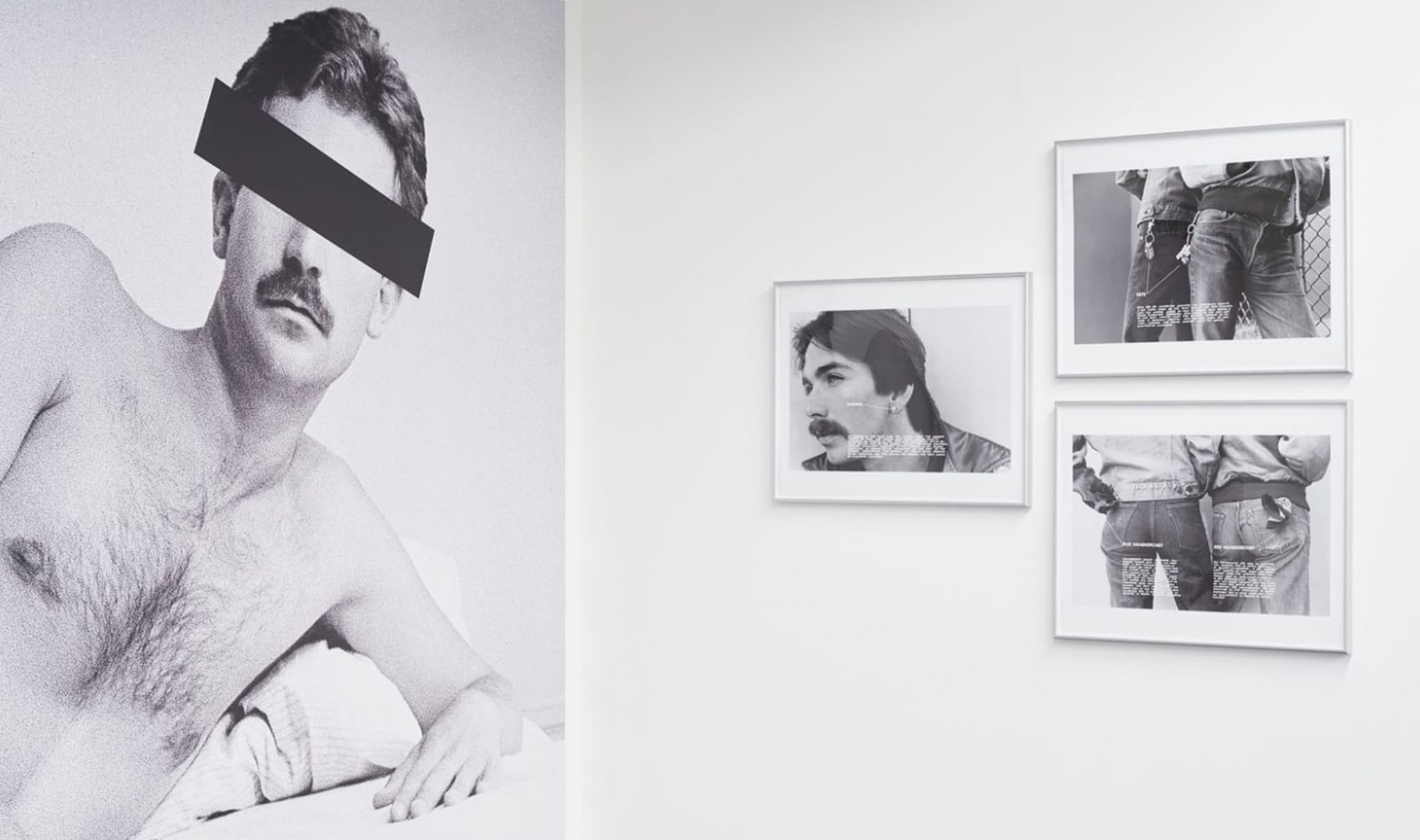Gay Semiotics: Hal Fischer
March 2017
What makes a city a fertile “ground zero” for social progress movements? Hal Fischer speaks about his project Gay Semiotics, San Francisco in the 1970s, and reading “just enough” Roland Barthes to jump-start his thinking on photography and language.
Hal Fischer interviewed by Francesco Tenaglia.

FRANCESCO TENAGLIA: How did the Gay Semiotics project and exhibition come into being?
HAL FISCHER: The twenty-four photographs that comprise Gay Semiotics were produced in 1977. The first exhibition of the series, which was also my first solo exhibition, opened on August 2, 1977, at Lawson de Celle Gallery in San Francisco. The series began as individual prints; the following year it was published as a monograph. The work was reintroduced in 2015. The prints and the presentation in metal frames at Project Native Informant, and in previous shows at Cherry and Martin in Los Angeles and Ratio 3 in San Francisco, closely resemble the 1977 exhibition.
As to how I came to do this work: I moved to San Francisco in 1975 to begin graduate studies in photography at San Francisco State University. When I applied, I was making traditional gelatin silver prints, mainly of iconic or eccentric structures that I found in the landscape of rural Pennsylvania. Then I got out to San Francisco and began exploring alternative processes, producing large bleached prints on which I inscribed words and diagrams. I met Lew Thomas, who was a photographer at the center of a movement connecting photography and language, and thanks to his mentoring, I began reading texts like Jack Burnham’s The Structure of Art (1971) and Ursula Meyer’s Conceptual Art (1972). Those were two key texts. Reading Burnham, and going on to read Claude Lévi-Strauss, was crucial.
FT: I understand your work also referenced Roland Barthes’s theories. Are you still interested in media studies as such? Would you say they provide a tool for understanding the social landscape?
HF: I did read some Barthes, but I’d say I read just enough. The signifiers were the first pictures to come out of my reading, though this was due to Levi-Strauss, not Barthes. It was like, these handkerchiefs—this is exactly what Levi-Strauss is writing about. That made for five pictures, and then I had to figure something out from there. I am interested in how media shapes our perceptions, and particularly the ways in which social media now appears to be defining so many aspects of our social existence. That interest was definitely influenced by Barthes and I think it is reflected in later work of mine, particularly my billboard, A Salesman (1979).
FT: Your work started in a single area of San Francisco, which was regarded as one of the most liberal places in the whole world at the time. Then it spread as, somehow, a lingua franca in the rest of the Western world.
HF: The images of gay culture that became a lingua franca appeared in San Francisco and in New York at the same time. A similar phenomenon occurred a decade before, when the Summer of Love made San Francisco’s Haight Ashbury the world epicenter of the hippie movement. Clearly hippies existed in many places, but San Francisco became the locale most prominently associated with the movement.I have thought about this with respect to both the hippie movement and the public emergence of gay culture (I’ve been told that gay hippies in the Haight were the first to migrate over to inexpensive housing in the Castro district). Their “beachhead” made it a destination of for a sizable migration of gay men from across the United States. There are specific reasons why this type of phenomenon occurs here. California historically has been a place of reinvention; it’s where Americans go to re-create themselves. In the twentieth century, San Francisco had a high degree of livability, meaning there was an adequate amount of housing and the city was relatively affordable, so enclaves were able to develop, first in the Haight-Ashbury and then in what is now known as the Castro. Also, the climate is temperate—people can gather outside throughout much of the year. For these reasons, it is a place conducive to creating a concentration of like-minded individuals. The Summer of Love brought thousands of young people to San Francisco. Many of them stayed and created permanent cultural change. A large gay migration to San Francisco occurred over a few years and the Castro became the capital of this movement. So certainly, in the twentieth century, San Francisco was conducive to this kind of social and political development, creating and then exporting its “lingua franca” to the rest of the world.
FT: What would you say is the relevance of your practice in post-Trumpian America?
HF: It is probably a little early to answer this, and I wish we were in post-Trumpian America. Unfortunately, we are in Trumpian America at the moment. I hesitate to use the word “relevance” and would instead ask: What is it that current audiences respond to in my work? There are a couple of things. My work reflects a brief period of time—the decade between the Stonewall uprising and the advent of AIDS. Gay Semiotics and the work that followed are a celebration of identity and community. For people who came of age in the 1970s, both gay and straight, it reminds them of their youth, of a more celebratory and innocent moment. The 1970s were fun. From the many young gays I’ve communicated with who were born in the late 1980s and 1990s, Gay Semiotics represents not only a piece of their history, but a time that is almost legendary. The 1970s were not without their problems, and there were some very dark moments, but it was in so many ways a less complex time, when we could both celebrate our identity and pursue our ideals.